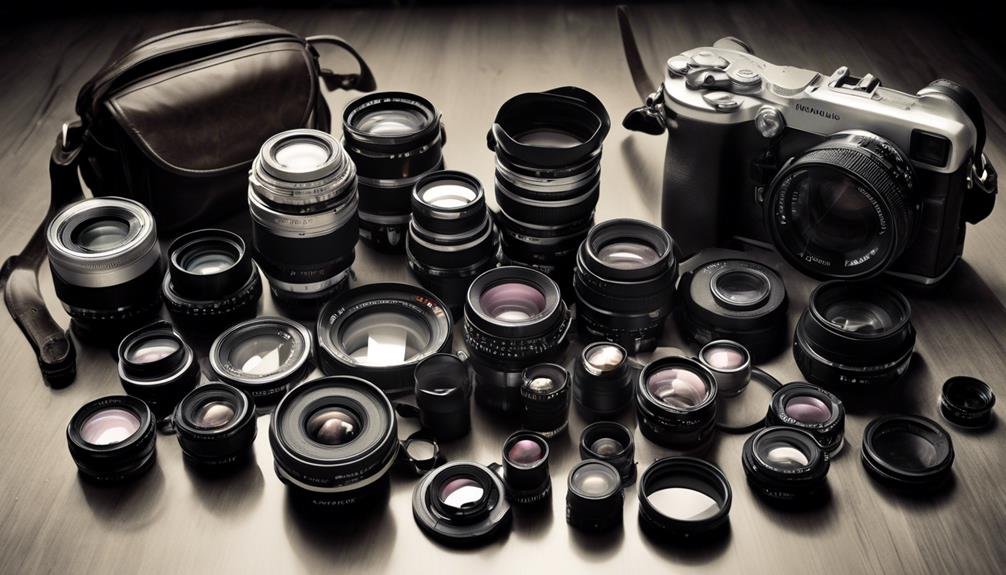
So, you've decided to dip your toes into the world of mirrorless photography, huh? Well, let's talk about the first steps we need to take to start capturing stunning images with these sleek and innovative cameras. Whether you're a seasoned DSLR shooter making the switch or a complete novice to the world of interchangeable lens cameras, there are some key considerations and initial actions that will set you on the right path to mastering mirrorless photography. We'll be covering everything from understanding the basics of mirrorless cameras to selecting the right gear and mastering essential shooting techniques. Stick around, because we're about to unravel the exciting journey of stepping into the mirrorless realm.
Understanding Mirrorless Camera Basics
Let's delve into the basics of mirrorless cameras and how they work. Mirrorless cameras offer several advantages over traditional DSLRs, such as being more compact and lighter due to the absence of a mirror and optical viewfinder, making them ideal for travel and street photography. They also boast advanced sensor technology, providing high-resolution images and excellent low-light performance. Another notable feature is their autofocus capabilities, often utilizing sophisticated phase-detection and contrast-detection systems to ensure swift and accurate focusing.
However, it's important to consider the disadvantages of mirrorless cameras as well. Battery life can be shorter compared to DSLRs due to the electronic viewfinder and constant sensor operation. Additionally, while the lens selection for mirrorless cameras has improved significantly, DSLRs still offer a wider range of lens options, especially for specialized photography needs.
Understanding mirrorless camera basics involves appreciating their strengths in terms of portability, sensor technology, and autofocus features, while also acknowledging their limitations in battery life and lens variety. As technology continues to advance, mirrorless cameras are expected to further bridge the gap with DSLRs, offering innovative solutions for photographers.
Selecting the Right Mirrorless Camera
When choosing a mirrorless camera, consider the specific features and capabilities that align with your photography needs and style. Camera features vary widely between models, so it's crucial to prioritize what matters most to you. Start by evaluating the sensor size, as this directly impacts image quality. Next, consider autofocus performance, especially if you shoot fast-moving subjects. High-resolution electronic viewfinders and tilting or articulating screens are beneficial for composing shots in various conditions. Additionally, assess the available lens options and compatibility, as this will ultimately expand your creative possibilities. When comparing options, look at the camera's low light performance, video capabilities, and overall ergonomic design. Some models may offer advanced features like in-body image stabilization or weather sealing, which can be essential for specific shooting scenarios. Furthermore, assess the battery life and consider the availability of accessories and support within the camera's ecosystem. By carefully examining these factors, you can narrow down the options and select a mirrorless camera that perfectly complements your photographic vision.
Essential Lenses and Accessories

Exploring the world of mirrorless photography, we find that selecting essential lenses and accessories is crucial for expanding our creative potential. When it comes to lenses, the options are vast, and choosing the right ones can significantly enhance our photographic capabilities. Some essential lens options to consider include versatile zoom lenses, fast prime lenses for low light conditions, macro lenses for close-up shots, and wide-angle lenses for expansive landscapes or architecture. Each of these lenses adds a unique dimension to our photographic toolkit, allowing us to capture a wide range of subjects with precision and artistic flair.
In addition to lenses, investing in a quality tripod can greatly benefit our photography. A sturdy tripod provides stability, allowing us to capture long exposure shots, achieve precise compositions, and explore creative angles with ease. Furthermore, it's essential for capturing sharp images, especially in low light conditions or when using telephoto lenses. When selecting a tripod, consider factors such as weight, height, and durability to ensure it meets your specific photography needs.
Mastering Settings and Shooting Techniques
To master mirrorless photography settings and shooting techniques, we must understand the fundamental principles of exposure and focus. Exposure control is crucial for achieving the perfect balance of light and shadows in our shots. By mastering exposure settings like aperture, shutter speed, and ISO, we can creatively manipulate the brightness, motion blur, and noise in our images. Additionally, composition techniques play a vital role in creating visually compelling photographs. Learning about the rule of thirds, leading lines, and framing can help us capture more captivating and balanced shots.
Understanding white balance is another essential aspect of mastering mirrorless photography. It allows us to adjust the color temperature of our images, ensuring that the whites appear truly white, regardless of the lighting conditions. Focusing methods are also critical for achieving sharp and clear images. Whether using single-point, zone, or eye-tracking autofocus, selecting the appropriate focusing mode can significantly impact the quality of our photographs.
Post-Processing and Sharing Your Photos

After mastering the settings and shooting techniques for mirrorless photography, the next step involves enhancing and sharing our photos through post-processing. This crucial step allows us to unleash the full potential of our images and share them with the world through various platforms. Here are some essential tips for post-processing and sharing your mirrorless photography:
- Utilize Editing Techniques: Experiment with different editing techniques such as color correction, contrast adjustments, and sharpening to enhance the visual impact of your photos.
- Explore Creative Filters: Explore the creative possibilities offered by filters and presets to add a unique touch to your images.
- Consider Composition: Pay attention to the composition of your photos during post-processing to ensure that the final result aligns with your artistic vision.
- Optimize for Social Media Sharing: Tailor your photos for optimal display on social media platforms by considering factors such as aspect ratios and file sizes.
Frequently Asked Questions
What Are the Advantages and Disadvantages of Using an Electronic Viewfinder (Evf) on a Mirrorless Camera?
In mirrorless photography, leveraging an electronic viewfinder (EVF) offers advantages like real-time exposure preview and focus peaking. However, it can drain battery life and may struggle in low light. Viewfinder resolution impacts clarity and detail, enhancing or detracting from the shooting experience.
How Can I Ensure That My Mirrorless Camera Battery Lasts Through a Long Day of Shooting?
To ensure our mirrorless camera battery lasts through a long day of shooting, we prioritize battery management and power saving features. By adjusting settings, using spare batteries, and carrying a portable charger, we optimize shooting endurance.
Are There Any Specific Maintenance Tips or Cleaning Techniques for Keeping the Sensor of a Mirrorless Camera Clean?
First, ensure the sensor is clean by using a blower or sensor cleaning kit. Avoid changing lenses in dusty environments. Regularly clean the camera body and lens mount. Store the camera in a clean, dry place.
What Are Some Common Issues or Challenges That Photographers May Face When Transitioning From a DSLR to a Mirrorless Camera?
Transitioning from a DSLR to a mirrorless camera can be like learning to dance with a new partner. We've found that focusing accuracy, battery life, ergonomics, and lens compatibility are common challenges.
How Can I Effectively Adapt My Existing DSLR Lenses to Work With a Mirrorless Camera?
Adapting lenses to a mirrorless camera can pose compatibility issues. We've found that some DSLR lenses may not perform optimally, affecting autofocus accuracy. Researching and investing in high-quality lens adapters can help mitigate these challenges.
